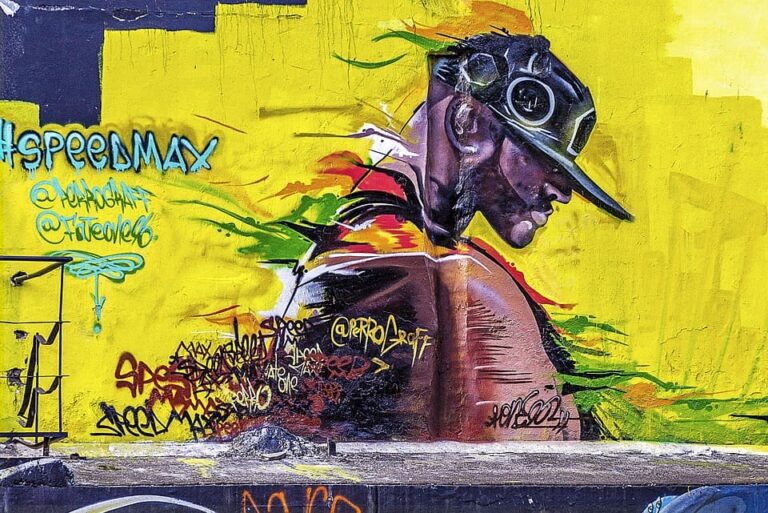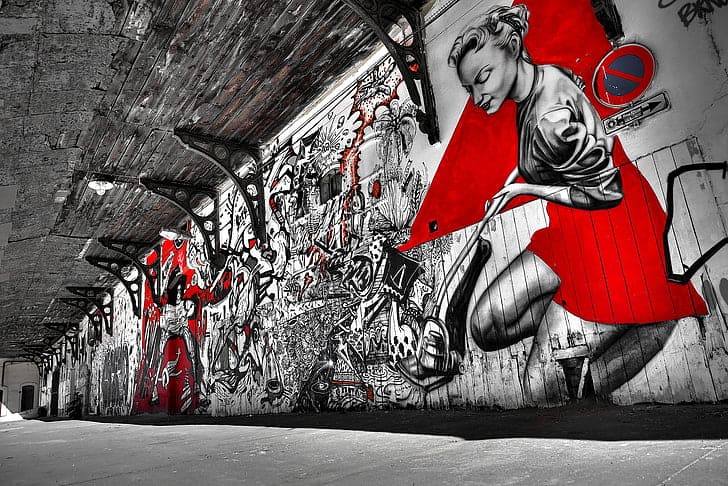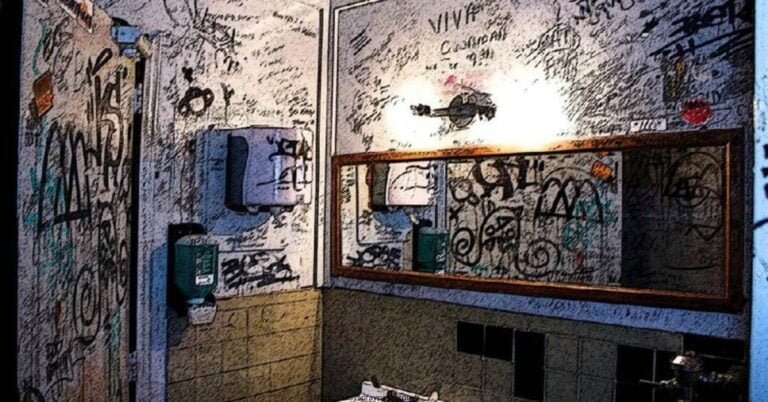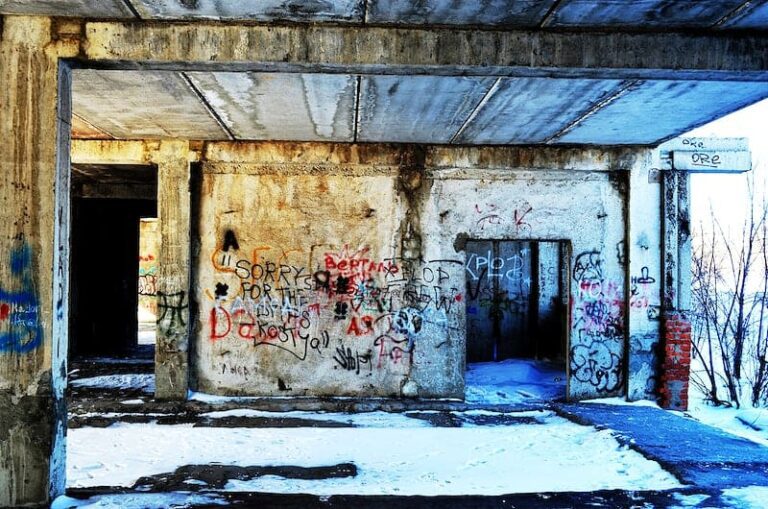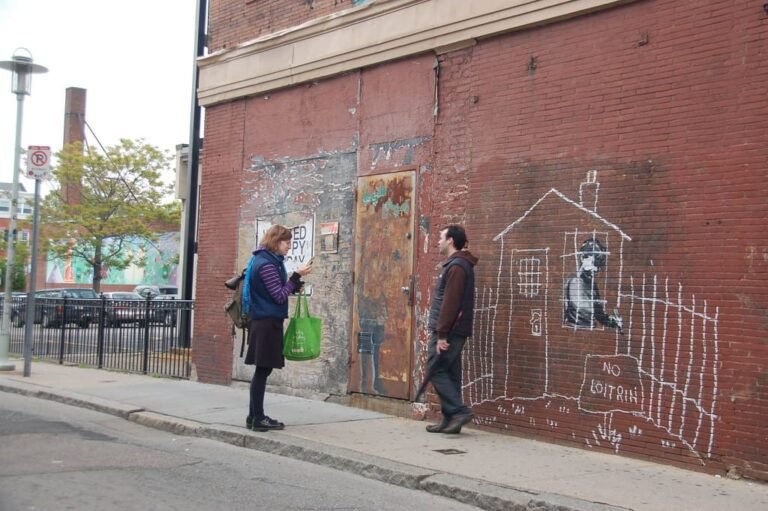Is It Considered Legal To Cover Someone Else’s Graffiti With Your Own?
Is It Considered Legal To Cover Someone Else’s Graffiti With Your Ownv: Covering someone else’s graffiti with your own is generally considered illegal, as it typically involves defacing property without the owner’s consent, falling under vandalism laws.
Clashes between artistic expression, property rights, and legal considerations unfold intriguing narratives. One such incident involves Peruvian artist José Carlos Martinat, who stirred controversy by removing graffiti from private properties in Buenos Aires and selling them in an art gallery. This act triggered a powerful response from local graffiti artists, illustrating the intricate dynamics and ethical quandaries surrounding the alteration or removal of street art.
Another noteworthy case is the 5Pointz saga in New York, where artists won a legal battle against property developers, delving into the legal status of graffiti and the delicate balance between artistic freedom and property rights.
These instances underscore the complex nature of the legal and ethical questions surrounding graffiti, a topic we explore further in this blog. Specifically, we examine the legal consequences of altering someone else’s graffiti, shedding light on trespassing, vandalism laws, and the ongoing debate over whether graffiti is perceived as art or vandalism in the eyes of the law.
What legal repercussions might you face for covering another person’s graffiti?
When you cover someone else’s graffiti, you could face legal repercussions that vary depending on local laws and the specific circumstances. Generally, graffiti is considered vandalism, which involves defacing or altering property without permission. If the original graffiti was unauthorized, covering it could still be seen as an act of vandalism because it further alters the property.

Legal consequences can range from fines and community service to more severe penalties like criminal charges, especially if the act is repeated or causes significant damage. In some jurisdictions, the intent behind the graffiti (whether it’s seen as artistic expression or mere defacement) can influence the severity of penalties. However, regardless of intent, the act of painting over property without consent remains illegal under vandalism laws.
Is it legal to cover someone else’s graffiti on your Own property?
Covering someone else’s graffiti on your property usually falls within your legal rights as a property owner. Property owners have the right to maintain the aesthetic and structural integrity of their property. If graffiti appears on your property without your consent, you are generally allowed to remove or cover it. However, there are exceptions, especially in cases where the graffiti is recognized as significant art.
In such instances, especially under laws like the Visual Artists Rights Act (VARA) in the U.S., the rights of the artist might be considered. This is particularly relevant if the graffiti has gained significant recognition or is considered of artistic value. Still, in most scenarios, property owners have the legal authority to manage and modify their property as they see fit, including covering graffiti
Does covering someone else’s graffiti count as vandalism or artistic expression?
Determining whether covering someone else’s graffiti is vandalism or artistic expression is complex and often subjective. Legally, if the act is done without the property owner’s consent, it’s typically considered vandalism, aligning with laws that prohibit property defacement without permission.
However, within the graffiti community and broader art world, such acts can be seen as part of an ongoing artistic dialogue. Graffiti is often about layering and evolving public art, where one artist’s work builds upon or responds to another’s. Ethically and artistically, this can be viewed as a legitimate form of expression.
Yet, this perspective doesn’t necessarily align with legal interpretations, which prioritize property rights and the consent of the property owner. Thus, while an act of covering another’s graffiti can be an artistic statement, it may still be legally classified as vandalism if it’s done without the owner’s permission.
How does the law differentiate between graffiti as art and graffiti as vandalism?
| Aspect | Graffiti as Art | Graffiti as Vandalism |
|---|---|---|
| Consent | Often created with the property owner’s consent or in designated areas allowing for graffiti. | Created without the property owner’s consent, on public or private property. |
| Legal Recognition | May be protected under laws like VARA (Visual Artists Rights Act) in the U.S. if it gains significant recognition. | Considered illegal under vandalism laws, as it involves defacing property without permission. |
| Artistic Value | Recognized for its artistic merit and contribution to the public space. | Viewed primarily as defacement, lacking artistic intent or contribution. |
| Location | Often located in areas designated for street art or in galleries. | Located on public buildings, private properties, transportation facilities, etc., where it is not authorized. |
| Intent | Aimed at artistic expression, conveying a message, or beautifying a space. | Intent often includes rebellion, protest, or simply the act of defacement for its own sake. |
| Community Impact | Can enhance community spaces, often with positive public reception. | Typically considered a nuisance, leading to negative public reception and potential degradation of community spaces. |
| Legal Outcome | Can be legally defended, especially if it’s commissioned or in a legal street art area. | Leads to legal consequences such as fines, community service, or imprisonment, depending on the extent of the damage and local laws. |
Is there a difference in legality between public and private property in this context?
| Property Type | Legality on Public Property | Legality on Private Property |
|---|---|---|
| Consent | Graffiti on public property is generally illegal without specific authorization or designated areas for street art. | Graffiti on private property can be legal if done with the property owner’s consent. Without consent, it is considered vandalism. |
| Legal Ramifications | Can lead to charges such as public defacement, vandalism, and even trespassing. | Legal actions can include charges of vandalism or property damage, especially if done without consent. |
| Community Impact | Often viewed as damaging to public spaces, affecting the community’s perception and potentially leading to more strict enforcement. | Impact varies based on the owner’s stance and the artwork’s effect on the community. Some private property graffiti is celebrated, while others are promptly removed. |
| Artistic Recognition | Rarely recognized as legitimate art unless it’s part of a public art project or in designated graffiti areas. | May gain recognition as art, especially if commissioned or part of a larger artistic initiative. |
Are there any specific laws protecting street art from being overwritten?
- Visual Artists Rights Act (VARA): In the U.S., VARA provides moral rights to artists, including the right to prevent the destruction of a work of recognized stature.
- Local Ordinances: Various cities may have specific ordinances that protect public art, including street art. These can include provisions that prevent the alteration or destruction of public art.
- Intellectual Property Rights: In some cases, street art can be protected under copyright law, especially if the artwork is original and fixed in a tangible medium of expression.
- Cultural Heritage Laws: In certain jurisdictions, street art that has become a significant part of cultural heritage might receive protection under these laws.
- Permit Systems: Some cities have permit systems that allow for legal graffiti in designated areas, which can offer some protection against being overwritten.
Does covering someone else’s graffiti raise ethical concerns?
Covering someone else’s graffiti does raise several ethical concerns. From an artistic standpoint, it can be seen as an infringement on another artist’s expression, disrupting the dialogue that street art often embodies. Ethically, it might be viewed as disrespecting the original artist’s work, especially if that work has cultural or community significance.

However, this ethical dilemma is nuanced. In the graffiti subculture, the transient nature of street art is recognized, and the act of painting over existing works is sometimes seen as part of the art form’s evolution. The ethical implications can vary greatly depending on the context, the content of the original and new graffiti, the location, and the community’s perception of the artwork.
How do graffiti artists view the act of painting over existing works?
Graffiti artists often view the act of painting over existing works as a normal part of the graffiti culture, recognizing its transient nature. This act is sometimes considered an unspoken dialogue between artists, where one artwork evolves into another, contributing to the dynamic and ever-changing landscape of street art. However, the respect for existing works varies among artists.
Some consider it disrespectful to paint over significant works, especially those with historical or cultural value, or works by respected artists in the community. In contrast, others see it as a challenge or a part of healthy artistic competition. The perception of this act can be complex, influenced by unwritten rules, personal ethics, and the recognition of street art’s impermanence.
What role does community opinion play in the legality of modifying street art?
Community opinion can significantly influence the legality of modifying street art. While legal statutes primarily determine the legality, public perception and community values can sway enforcement and interpretation of laws. Communities that value street art as a form of cultural expression may advocate for its preservation and oppose its unauthorized modification.
In contrast, communities viewing graffiti primarily as vandalism may support stricter enforcement against any form of graffiti, including modifications. Community opinion can also affect decisions in legal cases involving street art, where the impact on the community and cultural significance may be considered. This shows how societal values and public sentiment can play a role in shaping the legal landscape surrounding street art.
Is it possible to secure copyright for graffiti?
Securing copyright for graffiti is possible, especially if the artwork meets certain criteria. Under copyright law, an artistic work must be original and fixed in a tangible medium of expression to qualify for copyright protection. This means graffiti, when created with original artistic expression and affixed to securing copyright for graffiti is possible, especially if the artwork meets certain criteria.
Under copyright law, an artistic work must be original and fixed in a tangible medium of expression to qualify for copyright protection. This means graffiti, when created with original artistic expression and affixed to a permanent surface, can be copyrighted. However, issues arise when the graffiti is done without the property owner’s consent, as illegal acts generally cannot be copyrighted.
Furthermore, the impermanent nature of street art, often subject to being painted over or removed, can complicate copyright claims. Despite these challenges, there have been instances where graffiti artists have successfully claimed copyright over their work, particularly when it has gained recognition or has been created in legally sanctioned spaces.
How can one legally navigate creating graffiti in spaces with existing works?
Legally creating graffiti in spaces with existing works requires careful navigation of both legal and ethical guidelines. Firstly, obtaining permission from the property owner is crucial, as this avoids legal issues related to trespassing and vandalism.

Secondly, understanding and respecting the local community and existing graffiti culture is important. In areas where graffiti is more accepted or celebrated, there might be unspoken rules or a hierarchy among artists that should be considered.
Additionally, seeking out legal walls or spaces specifically designated for graffiti art can provide a legitimate platform for expression. Artists should also be aware of any local ordinances or permit requirements that might apply to street art. By respecting these legal and cultural norms, artists can contribute to the dynamic world of street art while minimizing legal risks and respecting the work of others.
Does the property owner have to wait for permission from city officials before painting over it?
In most cases, a property owner does not have to wait for permission from city officials before painting over graffiti on their property. The right to maintain and manage one’s property typically allows for the removal or covering of graffiti. This action is considered part of the property owner’s responsibility to upkeep their property and address any vandalism.
However, there are exceptions, particularly in areas where certain murals or pieces of street art are protected under local laws or ordinances. In such cases, a property owner may need to check with local authorities, especially if the graffiti is of significant cultural or historical importance or is protected under a specific public art program. Additionally, if the property is located in a historic district or under specific zoning regulations, there might be guidelines or restrictions regarding alterations to the building’s exterior, including painting over graffiti.
If someone breaks in, uses my stuff to paint, can I own and sell it? What about copyright?
If someone breaks into your property and uses your materials to create graffiti, the situation regarding ownership and copyright becomes quite complex:
- Legal Implications of Selling the Art: Selling the graffiti without the artist’s permission could lead to legal complications. Even though the artwork is on your property, the artist, as the copyright holder, has exclusive rights to reproduce, distribute, and display the work. Selling the graffiti without their consent could infringe on these rights.
- Moral Rights: In some jurisdictions, artists have moral rights to their work. This includes the right of attribution and the right to object to derogatory treatment of their work. Selling the work without acknowledging the artist or in a way that misrepresents their intent could violate these rights.
- Dealing with Trespass and Theft: While the focus here is on the artwork, it’s important to remember that the act of breaking in and using your stuff constitutes trespass and theft. Legal action can be taken against the trespasser for these offenses.
- Ownership of the Physical Work: Legally, the physical work created (the graffiti itself) is on your property, so you technically own the physical piece. This means you could potentially sell the physical graffiti. However, the act of selling it does not necessarily mean you own the intellectual property rights to the work.
- Intellectual Property and Copyright: The creator of the graffiti, even if they trespassed and used your materials, still holds the copyright to their artistic work, as long as it meets the criteria for copyright (originality and fixation in a tangible medium of expression). Copyright law typically protects the rights of the creator, regardless of the legality of how or where the work was created.
FAQs
Can you legally paint over graffiti that’s on public property?
Painting over graffiti on public property without authorization is usually illegal, considered vandalism.
If graffiti is on your own property, can you legally cover it with your own artwork?
Yes, property owners can legally cover graffiti on their own property.
Does the artistic value of graffiti affect its legal status?
Artistic value doesn’t necessarily change the legal status of graffiti, but it may influence community and legal perspectives.
Are graffiti artists protected by copyright laws for their street art?
Graffiti artists can be protected by copyright laws if their work meets legal criteria for originality and fixation.
Is there a legal way to create graffiti on properties with existing works?
Creating graffiti legally requires permission from property owners and adherence to local laws and cultural norms.
Conclusion
To comprehend the legality of covering someone else’s graffiti with your own, it’s crucial to grasp both legal boundaries and artistic ethics. Property rights and vandalism laws are essential considerations, and the cultural significance of street art also holds a significant role. Striking a balance between legal compliance and creative expression involves respecting both the law and the artistic community in these situations.
Jane Ansems is a highly talented and accomplished spray can artist, known for her intricate, detailed, and thought-provoking works of art. She began her career as a street artist in the early 2010s, quickly gaining recognition for her unique and innovative style.
